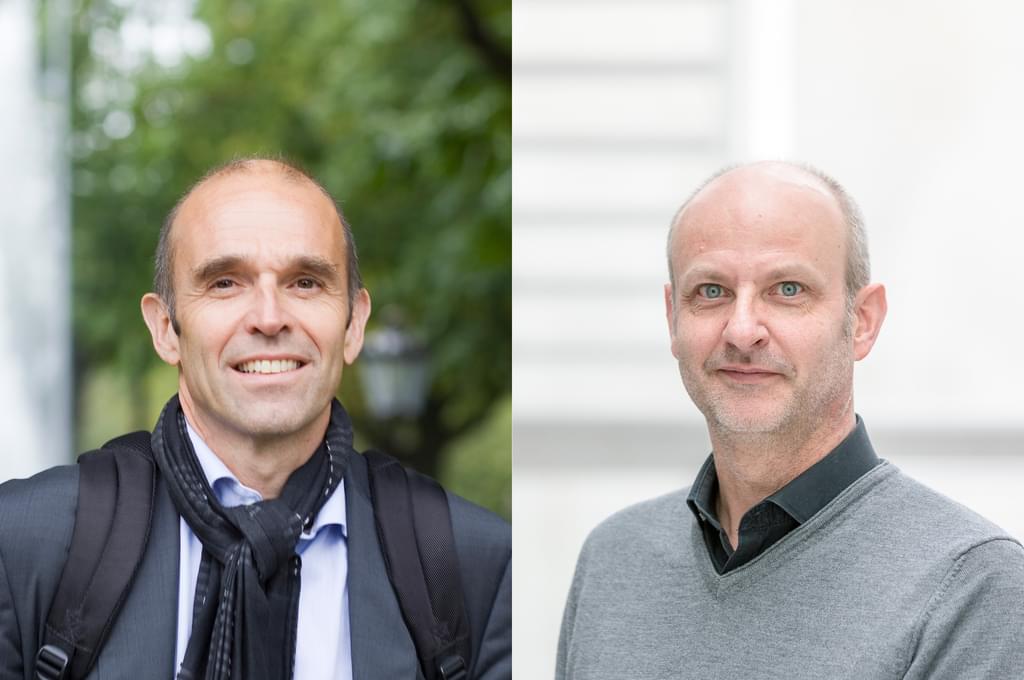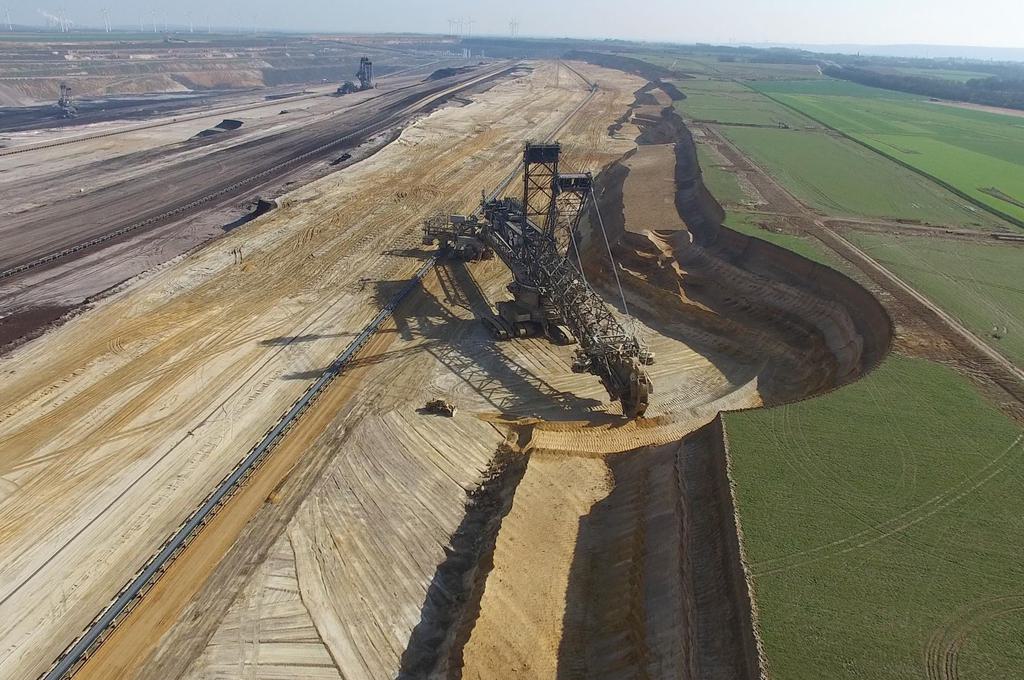As part of the 50th anniversary, cepezed seeks answers to questions about the future. What challenges do we face, what does the future demand of us and how can architects make a difference? Menno Rubbens (cepezedprojects) discussed the use of steel versus bio-based material and other complex choices with Maarten Hajer (Urban Futures Studio). They conclude that the future is uncertain, but that is not necessarily a bad thing.
importance of change
Menno: With Urban Futures Studio (at Utrecht University), you're researching the impact of climate change on cities, among other things. You are quite outspoken about the importance of change, especially when it comes to construction.
Maarten: 40% of the global building volume in 2050 has yet to be built. If we start building this with the same materials we use now, we can never stay below the 2 degrees of global warming agreed in Paris.
Menno: Do you mean because of pollution in extracting raw materials?
Maarten: It surprises me how rarely we see images of the earth being mined. The occupation of Lützerath, early this year, was significant for that reason only. The image and scale of that lignite mine highlights what is happening in nature to sustain our standard of living.
Text continues below image.
talking about (un)certainties in architecture


steel
Menno: Steel in itself is obviously not a filthy material, you would have to look into the energy that is used, which is the polluting factor.
Maarten: I disagree, the idea of using wind power and hydrogen to power the existing furnaces is a lobby from within that industry. Switching to hydrogen will displace the energy we need for other purposes. With hydrogen as a fuel, you have 40% energy loss. And you need a lot of wind turbines for that. I find it incomprehensible that the whole politics is following this hydrogen hype.
Menno: I don't believe in hydrogen for households or cars either, but for big industry?
Maarten: Agreed, as long as you approach this Europe-wide. Refineries are post-war inventions, they have not been there since eternity, nor will they be there for eternity. At the furnaces, it is better to keep something smaller afloat, where you could use hydrogen.
Menno: We can't solve everything biobased, certainly not in the short term. So you will have to find an efficient use of polluting materials, such as steel, concrete and glass, and you will have to apply biobased materials in such a way that they last. Because writing off a biobased building in 50 years is equally unwise.
agents of change
Maarten: Really sustainable is a building that you can adapt to new uses, which is what I find so interesting about your portfolio. The measurements have to be right and the materials have to allow it. A downside of cross-laminated timber is that it is difficult to change anything.
Menno: The adaptive capacity of a building is, as far as we are concerned, a slightly different task from the material transition, where we think more in the direction of hybrid structures. If you choose wood, the laws and regulations now often require the use of a lot of wood, where a thin slab of concrete would suffice - concrete that you might be able to reuse. cepezed believes that you should be able to take a building apart again and even repair it in a product-oriented way. This also requires a completely different financing and guarantee system.
Maarten: Does this change your role as an agency?
Menno: It's more of a standard methodology, standardising a technical principle. We design buildings that are ready for a circular life in the future.
fear of the new
Martin: With all innovations, the fear of the new applies. You see that everywhere, whether it's the gardeners or the construction industry. We need to hurry up and get the Steering Group Experiments in Public Housing and things like that re-established so that serious experimentation and evaluation can take place. That's the only way to show possibilities and really get people on board - including the possibilities of temporary architecture. I usually keep the message simple: don't build in potentially soggy territory. But if you build temporary architecture, and warn people in advance about what awaits them in 20 or 30 years' time, then it can be done. And it becomes financeable, because it's about the superstructure and not the land.
Menno: The idea that we build for eternity is stubborn. Even spatial planning should embrace temporality and unpredictability; the non-permanent should become part of what we build.
Maarten: You can issue temporary permits as a way of dealing with climate adaptation. Another thing is development law and the whole politics of land.
Menno: The ground lease construction ensures that, as the owner of the land, you stay involved in what happens for a long time. That offers opportunities, but I notice that even the big banks have no idea as yet how to approach that, or at least experiment with it. A circularity fund of pension funds, for example, could experiment with temporary business cases, or with bio-based materials. I think there is enough money for experiments. Why is this not being appropriated?
Menno: Do you mean that this is going to be a turning point?
Maarten: We need to think about a completely different way of life where you need less labour and where the quality of life is determined by something other than material consumption.
Menno: As an architect, you tend to fight uncertainty. To me, it appeals to embrace uncertainty instead.
Maarten: With that, you open up a huge discussion. The entire financing system in construction is based on calculable risks. A bank cannot deal with uncertainty. That risk calculus leads to conservatism, because by definition such a model only contains what you already know.
Menno: Moreover, certainties can simply be uncertainties, think of the corona pandemic. I often have discussions with banks about this false certainty - the idea that a detachable or circular building, which requires a bit more investment, would carry all kinds of risks. Whereas it is actually a method to reduce your risk.
violence
Martin: I am also interested in insecurity as a social process. Is violence part of it, for instance? The transformation to a sustainable world is such that historians wonder if it can be done without violence. I think a lot more examples of violence are going to be seen in the transition, like in Lützerath. If the Ministry of I&W were to be so incredibly stupid as to decide to go ahead with the widening of the A27 near Utrecht, I predict that really the whole city would resist. Such resistance to ingrained thinking, in this case from the ministry, is part of the transition.
Menno: If another housing project is developed with tunnel shuttering for concrete people should chain themselves to it!
Maarten: You can already see a kind of hardening developing, because there are real losers in this game. Those don't give up their positions easily. Even umbrella organisations are never in favour of innovation, because they represent all their members. Every transition has losers. These, by definition, hold up the transition.
Maarten Hajer is a political scientist and urban planner. Since 2015, he has led the Urban Futures Studio (Utrecht University), which conducts research on the future of the city, in all its facets, linking science to art and political policy. Previously, Hajer's positions included director of the Netherlands Environmental Assessment Agency (PBL) and professor of Governance & Policy at the University of Amsterdam.
→ Mail bd@cepezed.nl or call our business development team on +31 (0)15 2150000